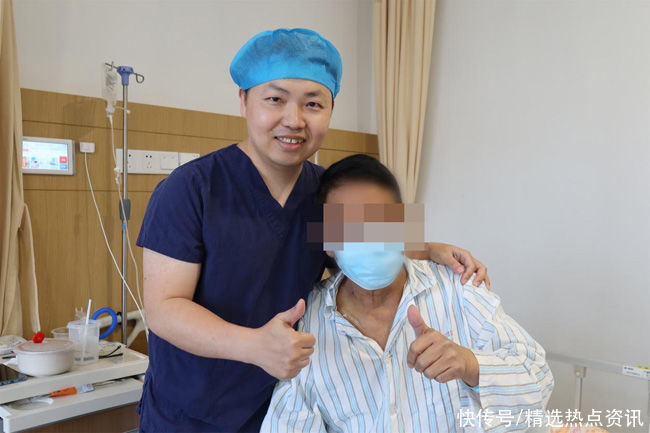Source: People’s Daily Online-Fujian Channel Original Manuscript
“I can’t think of it, I don’t need to open my chest and just a little bit of a wound will solve my ‘heart trouble’, and I will be able to go to the ground in two days. .” The patient was excited and grateful. A few days ago, Xiamen University Affiliated Cardiovascular Hospital (Xiaxin for short) performed aortic root replacement surgery (Bentall surgery) for a patient with aortic sinus aneurysm using a minimally invasive small incision instead of thoracotomy. It is reported that this is the first case in Fujian Province.
Two months ago, Mr. Huang, who lives in Zhangzhou, went out for a walk after dinner and suddenly felt a severe pain in his chest, so he rushed to the local hospital for treatment. The echocardiography showed “severe aortic insufficiency”. For further diagnosis and treatment, he rushed to the heart of Xiamen, and after emergency CT coronary angiography (CTA) was diagnosed as “aortic sinus aneurysm, aortic insufficiency”.
“The typical symptoms of aortic sinus aneurysm are severe pain in the precordial area after activity, dyspnea, chest tightness, etc. In severe cases, it can rapidly develop into heart failure. Moreover, the aorta is the largest blood vessel in the human body. Once the tumor ruptures, it will lead to massive hemorrhage and endanger the patient’s life.” Wu Yuan, deputy chief physician of Xiamen Heart Surgery Department, said: “The patient’s aortic sinus and aortic root have a tumor-like widening, with a diameter of 5 cm, which is normal for ordinary people. It is like a ‘stealth bomb’ buried in the heart, and the aortic root replacement surgery, which is the Bentall surgery, needs to be performed as soon as possible.”
The so-called Bentall surgery is the application of a valved artificial blood vessel. The operation to replace the root of the ascending aorta and the aortic valve and transplant the left and right coronary arteries is a very difficult operation in the field of cardiac surgery. The biggest difficulty lies in the exposure of the surgical site and postoperative hemostasis. Therefore, conventional surgery adopts the method of median thoracotomy, which requires cutting off the patient’s sternum. Larger and longer postoperative recovery time.

Patient with doctor.
In order to minimize surgical trauma, after careful evaluation and rigorous preoperative preparation, Xiamen Heart Surgery decided to perform aortic root replacement for Mr. Huang through a minimally invasive small incision. Wu Yuan introduced, “With the further deepening of the subspecialty construction of cardiac surgery, the subspecialty of minimally invasive endoscopy has become a very important part of it, and more and more difficult minimally invasive surgeries have been carried out.”
< p> During the operation, Wu Yuan led the team to open a small incision of only about 5.5 cm in the intercostal space on the right side of the patient’s chest wall, and completed the operation through the incision. Due to the small incision, the surgical field of view was not fully exposed, and the operation was difficult. technical requirements are extremely high. Under the careful care of the medical staff after the operation, Mr. Huang recovered quickly and was discharged from the hospital 10 days later. (Picture and text provided by Xiamen University Affiliated Cardiovascular Hospital)